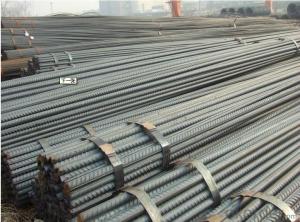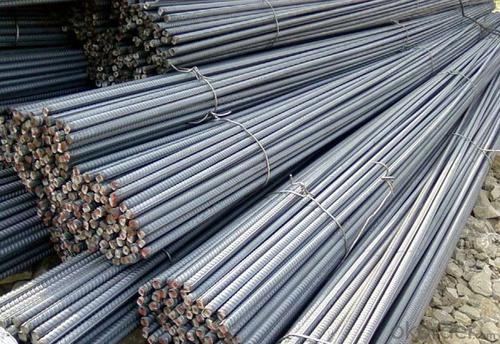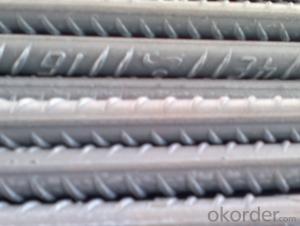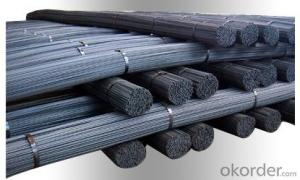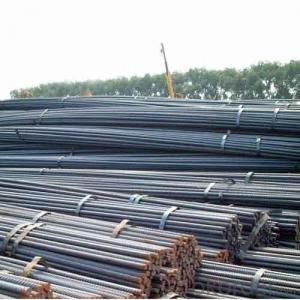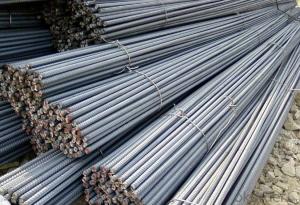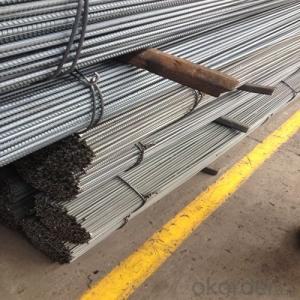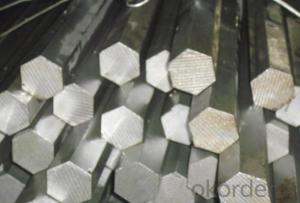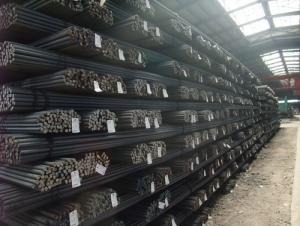Deformed Bar Hot Rolled High Quality BS4449
- Loading Port:
- Tianjin
- Payment Terms:
- TT OR LC
- Min Order Qty:
- 25 m.t.
- Supply Capability:
- 20000000 m.t./month
OKorder Service Pledge
OKorder Financial Service
You Might Also Like
Specification
Product Description:
OKorder is offering high quality Hot Rolled Steel I-Beams at great prices with worldwide shipping. Our supplier is a world-class manufacturer of steel, with our products utilized the world over. OKorder annually supplies products to European, North American and Asian markets. We provide quotations within 24 hours of receiving an inquiry and guarantee competitive prices.
Product Applications:
Deformed bar is widely used in buildings, bridges, roads and other engineering construction. Big to highways, railways, bridges, culverts, tunnels, public facilities such as flood control, dam, small to housing construction, beam, column, wall and the foundation of the plate, deformed bar is an integral structure material. With the development of world economy and the vigorous development of infrastructure construction, real estate, the demand for deformed bar will be larger and larger
Product Advantages:
OKorder's Steel I-Beams are durable, strong, and resist corrosion, exact size, regular package, chemical and mechanical properties are stable.
Main Product Features:
· Premium quality
· Prompt delivery & seaworthy packing (30 days after receiving deposit)
· Corrosion resistance
· Can be recycled and reused
· Mill test certification
· Professional Service
· Competitive pricing
Product Specifications:
Manufacture: Hot rolled
Grade: BS4449
Certificates: ISO, SGS, BV, CIQ
Diameter: 6mm,8mm,10mm,12mm,14mm,16mm,18mm,20mm,
22mm,25mm,28mm,32mm,36mm,40mm,50mm
Length: 6M, 9M,12M or as required
Packaging: Export packing, nude packing, bundled
Chemical Composition: (Please kindly find our chemistry of our material based on HRB500 as below for your information)
Grade | Technical data of the original chemical composition (%) | ||||||
C | Mn | Si | S | P | V | ||
HRB400 | ≤0.25 | ≤1.60 | ≤0.80 | ≤0.045 | ≤0.045 | 0.04-0.12 | |
Physical capability | |||||||
Yield Strength (N/cm²) | Tensile Strength (N/cm²) | Elongation (%) | |||||
≥400 | ≥570 | ≥14 | |||||
Theoretical weight and section area of each diameter as below for your information:
Diameter(mm) | Section area (mm²) | Mass(kg/m) | Weight of 12m bar(kg) |
6 | 28.27 | 0.222 | 2.664 |
8 | 50.27 | 0.395 | 4.74 |
10 | 78.54 | 0.617 | 7.404 |
12 | 113.1 | 0.888 | 10.656 |
14 | 153.9 | 1.21 | 14.52 |
16 | 201.1 | 1.58 | 18.96 |
18 | 254.5 | 2.00 | 24 |
20 | 314.2 | 2.47 | 29.64 |
22 | 380.1 | 2.98 | 35.76 |
25 | 490.9 | 3.85 | 46.2 |
28 | 615.8 | 4.83 | 57.96 |
32 | 804.2 | 6.31 | 75.72 |
36 | 1018 | 7.99 | 98.88 |
40 | 1257 | 9.87 | 118.44 |
50 | 1964 | 15.42 | 185.04 |
FAQ:
Q1: Why buy Materials & Equipment from OKorder.com?
A1: All products offered byOKorder.com are carefully selected from China's most reliable manufacturing enterprises. Through its ISO certifications, OKorder.com adheres to the highest standards and a commitment to supply chain safety and customer satisfaction.
Q2: How do we guarantee the quality of our products?
A2: We have established an advanced quality management system which conducts strict quality tests at every step, from raw materials to the final product. At the same time, we provide extensive follow-up service assurances as required.
Q3: How soon can we receive the product after purchase?
A3: Within three days of placing an order, we will begin production. The specific shipping date is dependent upon international and government factors, but is typically 7 to 10 workdays.
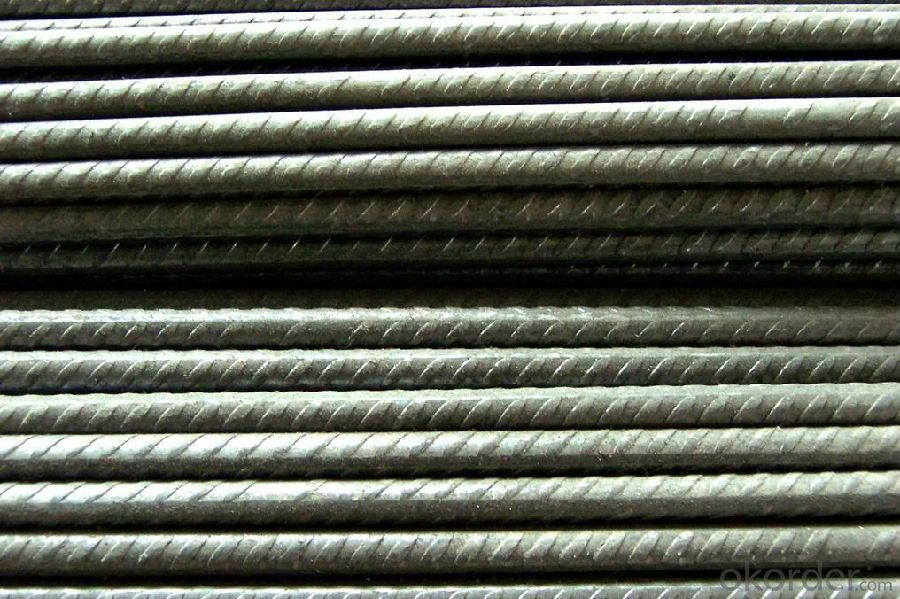
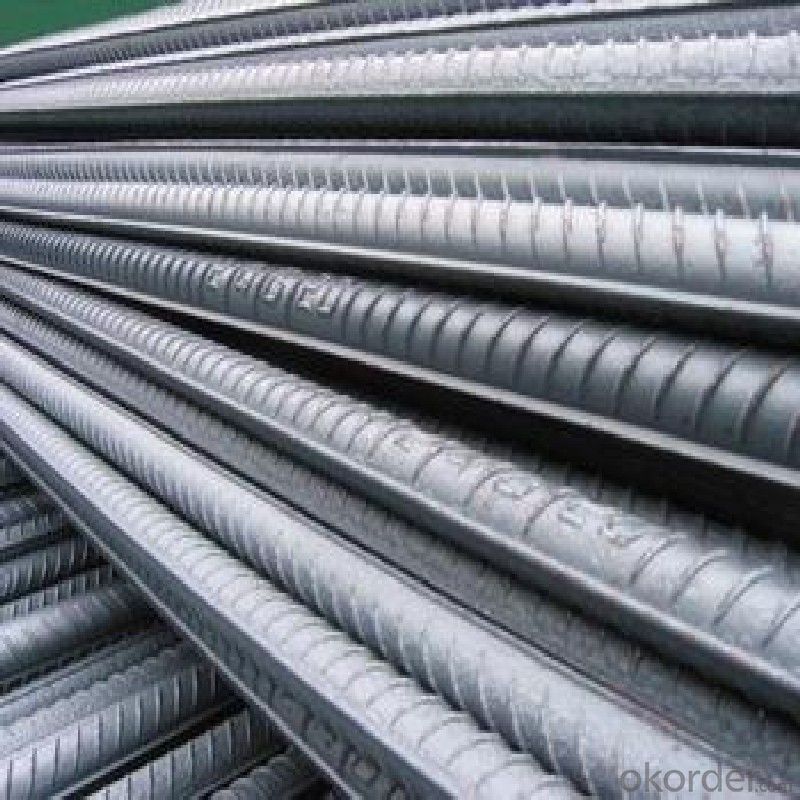
- Q: Are there any international standards for steel rebars?
- Yes, there are several international standards for steel rebars. The most widely recognized standard is the ISO 6935-2, which provides specifications for steel rebars used in reinforced concrete structures. Additionally, the American Society for Testing and Materials (ASTM) has its own set of standards, such as ASTM A615 and ASTM A706, which are widely adopted in North America and many other countries. Other international standards include the European standard EN 10080 and the British standard BS 4449. These standards ensure quality, strength, and compatibility of steel rebars across different regions.
- Q: What are the different methods for attaching steel rebars to existing structures?
- Attaching steel rebars to existing structures can be done using various methods, depending on the project's specific requirements and conditions. Some commonly used methods include: 1. Utilizing welding techniques: By employing welding techniques, rebars can be securely attached to the existing structure. This method offers a robust and long-lasting connection, but it necessitates skilled labor and may not be applicable in all situations. 2. Employing epoxy bonding: Epoxy adhesives can be utilized to bond rebars to existing structures. This method is simple to apply and provides a reliable connection, particularly when the rebars are embedded in concrete. However, it is crucial to ensure proper surface preparation and adhere to the manufacturer's instructions for optimal results. 3. Utilizing mechanical anchoring: Rebars can be attached to existing structures using mechanical anchors like anchor bolts or expansion anchors. This method involves drilling holes into the structure and inserting the anchor, which ensures a secure connection. Selecting the appropriate anchor type and size based on the load requirements and structural conditions is essential. 4. Employing clamping or fastening: In some instances, clamps or fasteners can be used to attach rebars to existing structures. This method is relatively quick and easy to install, but it may not provide as strong of a connection as welding or epoxy bonding. 5. Overlapping rebars: When reinforcing existing concrete structures, rebars can be overlapped with the existing reinforcement and tied together using wire or other methods. This method is commonly employed in construction to maintain reinforcement continuity and enhance load-carrying capacity. It is crucial to consult with structural engineers or professionals experienced in rebar installation to determine the most suitable method for attaching steel rebars to existing structures. They will consider factors such as structural integrity, load requirements, and local building codes to ensure a safe and effective connection.
- Q: Can steel rebars be used in architectural applications?
- Yes, steel rebars can be used in architectural applications. They are commonly utilized in reinforced concrete structures to provide strength, durability, and structural integrity. Steel rebars are frequently used in architectural designs to reinforce beams, columns, slabs, and other elements, ensuring the stability and longevity of the building.
- Q: How do steel rebars improve the durability of concrete structures?
- Steel rebars improve the durability of concrete structures in several ways. Firstly, steel rebars act as reinforcement in concrete, providing added strength and stability to the structure. When combined with concrete, the high tensile strength of steel rebars helps to resist cracking and prevent the structure from collapsing under heavy loads or seismic activities. Secondly, steel rebars help to control the formation and propagation of cracks in concrete structures. Concrete is strong in compression but weak in tension, meaning it tends to crack when subjected to tensile forces. By placing steel rebars strategically within the concrete, these cracks are minimized and prevented from spreading, thus enhancing the overall durability of the structure. Furthermore, steel rebars help to improve the resistance of concrete structures against corrosion. Concrete is highly alkaline, which forms a protective layer around the steel rebars, preventing them from rusting. This corrosion resistance ensures that the rebars maintain their structural integrity over time, reducing the risk of deterioration and enhancing the longevity of the concrete structure. In addition, steel rebars also enhance the fire resistance of concrete structures. Due to their high melting point, steel rebars can withstand high temperatures, thereby preventing the concrete from losing its structural integrity during a fire. This added fire resistance ensures that the concrete structure remains stable and safe in the event of a fire, further enhancing its durability. Overall, the inclusion of steel rebars in concrete structures significantly improves their durability by providing added strength, controlling cracks, enhancing corrosion resistance, and increasing fire resistance. These benefits contribute to the longevity and safety of concrete structures, making them more reliable and sustainable in the long run.
- Q: What are the different types of steel rebars used in underground constructions?
- There are several types of steel rebars used in underground constructions, including epoxy-coated rebars, stainless steel rebars, and galvanized rebars. These different types of rebars offer various benefits such as increased corrosion resistance, improved durability, and enhanced structural strength, making them suitable for different underground applications.
- Q: How are steel rebars spliced or connected in construction joints?
- In construction joints, steel rebars are typically spliced or connected using various methods to ensure the structural integrity and strength of the reinforced concrete. One common method is known as lap splicing, where the rebars are overlapped and then mechanically connected or tied together using steel wires or couplers. The length of the overlap required for lap splicing depends on the diameter of the rebars and the design specifications. It is usually specified in terms of the rebar diameter or as a multiple of it. The overlapping length ensures that the load transfer between the two rebars is efficient and prevents any potential failure at the connection point. Another method of splicing steel rebars is the use of mechanical couplers. These couplers are pre-fabricated devices that are designed to connect two rebars together securely. They eliminate the need for lap splicing and provide a more precise and reliable connection. Mechanical couplers are particularly useful in situations where the rebar size is larger or where it is not feasible to have long lap lengths. Additionally, in some cases, welded splicing may be used. This method involves welding the ends of the rebars together, creating a solid and continuous connection. Welded splicing is commonly used when the rebars are larger in diameter, and the joint needs to withstand higher loads. However, it is essential to ensure that proper welding techniques and practices are followed to maintain the integrity of the connection. Overall, the splicing or connection of steel rebars in construction joints is a critical aspect of reinforced concrete construction. It ensures that the rebars act as a continuous reinforcement, allowing the structure to resist applied loads effectively. The choice of splicing method depends on factors such as rebar size, design specifications, and project requirements.
- Q: Can steel rebars be used in structures with high moisture content?
- Steel rebars can be used in structures with high moisture content, but proper precautions should be taken to prevent corrosion. Moisture can accelerate the corrosion process of steel, which can weaken the rebars and compromise the structural integrity of the building. To mitigate this risk, measures such as using corrosion-resistant coatings, proper waterproofing, and regular maintenance should be implemented to protect the rebars and ensure the safety and longevity of the structure.
- Q: Are steel rebars suitable for reinforcement in historical monuments?
- Steel rebars can be suitable for reinforcement in historical monuments, as they are strong, durable, and provide structural stability. However, it is important to consider the specific requirements and conditions of each monument, as their use can potentially impact the historical integrity and aesthetic value. It is crucial to consult with experts in conservation and restoration to ensure the proper and sensitive use of steel rebars in historical monument reinforcement.
- Q: Are steel rebars suitable for use in high-rise buildings?
- Yes, steel rebars are suitable for use in high-rise buildings. Steel rebars, also known as reinforcing bars, are commonly used in the construction industry to provide strength and stability to concrete structures. High-rise buildings require a strong and durable structural system to withstand various loads and forces such as wind, earthquakes, and the weight of the building itself. Steel rebars offer excellent tensile strength and ductility, making them ideal for reinforcing concrete in high-rise structures. One of the key advantages of steel rebars is their ability to resist tensile forces. Concrete is strong in compression but weak in tension, and steel rebars help counteract this weakness by providing the necessary tensile strength. This is crucial in high-rise buildings where the weight of the structure can cause tension on the concrete elements. By reinforcing the concrete with steel rebars, the overall structural integrity of the building is enhanced, ensuring its safety and stability. Additionally, steel rebars have superior ductility, which is the ability to deform under stress without fracturing. This property is essential in high-rise buildings as they are subject to dynamic loads and potential movements caused by factors like wind or seismic activity. Steel rebars can absorb and distribute these forces, reducing the risk of structural failure or collapse. Furthermore, steel rebars are readily available and cost-effective compared to alternative materials such as carbon fiber or fiberglass. They can be easily fabricated and installed in various shapes and sizes to fit the specific design requirements of high-rise buildings. However, it is important to note that the suitability of steel rebars in high-rise buildings also depends on proper design, installation, and regular maintenance. It is crucial to follow the relevant building codes and standards, ensure proper corrosion protection, and conduct regular inspections to detect any potential issues. By adhering to these practices, steel rebars can provide a reliable and durable reinforcement solution for high-rise buildings.
- Q: Can steel rebars be used in tunneling and mining operations?
- Yes, steel rebars can be used in tunneling and mining operations. Rebars, which are steel bars commonly used to reinforce concrete structures, can also be employed in underground construction projects such as tunnels and mines. These steel bars provide additional strength and stability to the structures in these environments, ensuring durability and safety. In tunneling projects, rebars are often embedded in shotcrete or concrete linings to enhance the structural integrity of the tunnel walls and prevent collapse. Similarly, in mining operations, rebars are used to reinforce the roofs, walls, and support structures within the mine, safeguarding against potential hazards such as rockfalls and cave-ins. The use of steel rebars in tunneling and mining operations is crucial for maintaining the integrity and stability of these underground structures.
Send your message to us
Deformed Bar Hot Rolled High Quality BS4449
- Loading Port:
- Tianjin
- Payment Terms:
- TT OR LC
- Min Order Qty:
- 25 m.t.
- Supply Capability:
- 20000000 m.t./month
OKorder Service Pledge
OKorder Financial Service
Similar products
Hot products
Hot Searches
Related keywords

